Back Problems? Try Putting Your Feet Up
http://decor-ideas.org 07/22/2014 05:13 Decor Ideas
Much has been publicized in recent years about how poorly designed office chairs can encourage bad posture that leads to neck and back problems. While ergonomically designed desk chairs may help support us at work, how can we keep ourselves healthy when we’re trying to relax at home? The answer may rest with your feet.
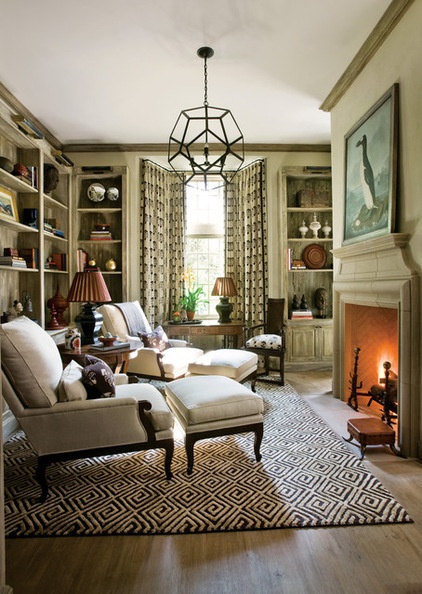
Ergonomics deals with designing and arranging things so that people can use them easily and safely. In interior design it’s a term that has been grounded more in commercial design, with much attention devoted to efficient and supportive desk chairs and workstations. While office applications have prospered in the ergonomic limelight, less focus has been paid to residential design, especially seating.
Sitting in a comfy chair and putting one’s feet up has long been a way of relaxing after a hard workday. Unlike with an adjustable work chair, one of the challenges with seating at home is that it’s typically shared among different family members. We come in all shapes and sizes, so it’s unlikely that the scale of a major seating piece, such as a sofa, is appropriately sized for everyone in the home — or is adjustable in height like an office chair. Ever see a petite woman engulfed in an overstuffed sofa with her legs dangling off the edge of the cushion? It not only looks goofy, it’s not healthy. While a dedicated sofa for each family member is likely out of the question, other seating pieces can provide a better fit.
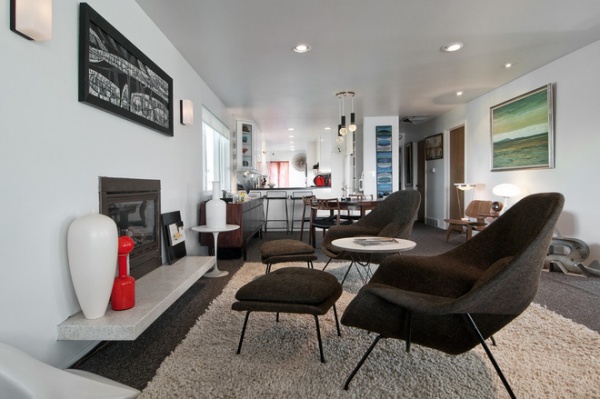
One of the tenets of good ergonomic design is foot support; a lack of it, as evidenced by dangling legs, puts stress on pressure points behind the knees and backs of the legs. Sitting forward to compensate then leaves the back unsupported and encourages slouching.
“We often don’t realize how much harm we do to ourselves while sitting in slumped forward postures,” says ergonomics expert Rani Lueder of Humanics Ergonmics in Austin, Texas. “We think we are comfortable hunching forward, because our muscles relax as we shift the loads to our ligaments.” Lueder adds that in the past, ligaments were thought of as being kind of like ropes, with minimal nerve feedback and circulation. However, in the past decade, research has shown that ligaments provide information to our brain to let us know how we are sitting. When we strain our ligaments, we lose the ability to send feedback to our brain, and this makes us more likely to injure ourselves.
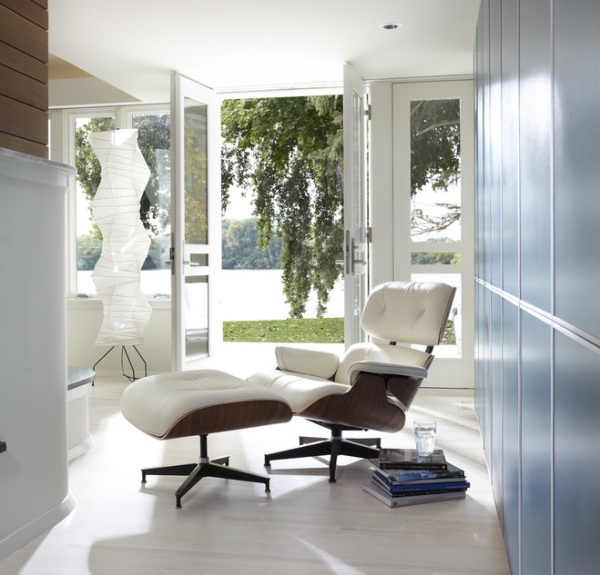
Leaning backward, on the other hand, can take pressure off the spine and help relax the muscles. Lueder adds that elevating the legs helps make it easier to lean back, and at the same time brings the legs up closer to the heart, which can relieve leg edema and foot swelling and lower the heart rate.
These issues, Lueder points out, are more relevant to people in their mid-40s or older. However, she adds, “raising the legs up without at the same time leaning back can hurt the back. That is because bringing the legs up closer to the torso increases the loads on the spine by flattening the lumbar curve of the lower back. There is also a bit of flattening of the lower back when the legs straighten from the traditional sitting position.” So, leaning backward while raising the legs is the most beneficial position for the back.
Here are three great ways to put your feet up.
Lounge Chair and Ottoman
Appropriately named, the lounge chair encourages lounging! Paired with an ottoman, it allows users to put their feet up and easily adjust the ottoman forward or backward a bit to accommodate their height. The lounge chair and ottoman setup offers spatial flexibility that single pieces, such as recliners, cannot. The downside is that although most lounge chair backs have a reclining angle that is comfortable for most people, it’s typically stationary. Lounge chairs also tend to be on the larger side, and paired with an ottoman can command a lot of square footage.
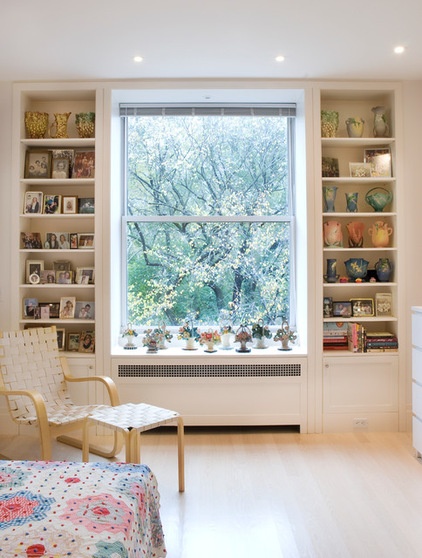
However, if your home is on the smaller side and you don’t have much room, a well-designed armchair and stool will do. I like the Alvar Aalto 406 armchair and stool shown here. Designed in 1939, this classic chair was affectionately nicknamed the Pension Chair, because it transports its sitter to a blissful state of “retirement.” In comparison to a solid seat material, the webbed cotton seating allows more movement for the sitter’s back and adjusts to flexing or moving. This alleviates pressure on the spine and encourages more active rather than passive sitting.
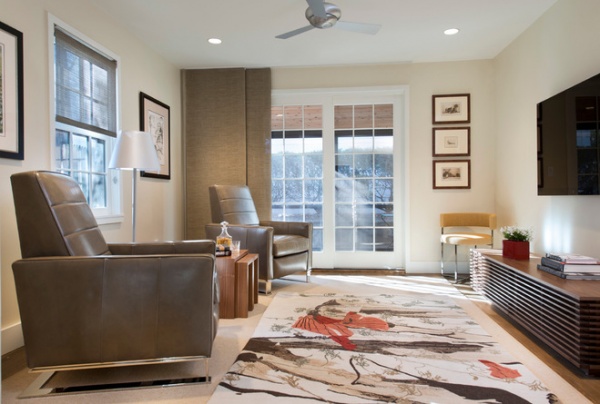
Recliner
“Recliner” to most people conjures images similar to Martin Crane’s duct-tape-clad orange and gold textured piece on Frasier. However, not all recliners sport the big side footrest lever or fit into what many feel is the “unsightly” category. They’re also a great alternative to a lounge chair and ottoman if you don’t have the space for the pair when the chair isn’t in use.
Recliners have a leg up over lounge chairs and ottomans in that they offer head support and have an adjustable back that varies somewhere between 120 and 170 degrees when fully opened. They are also available in some trendy designs.
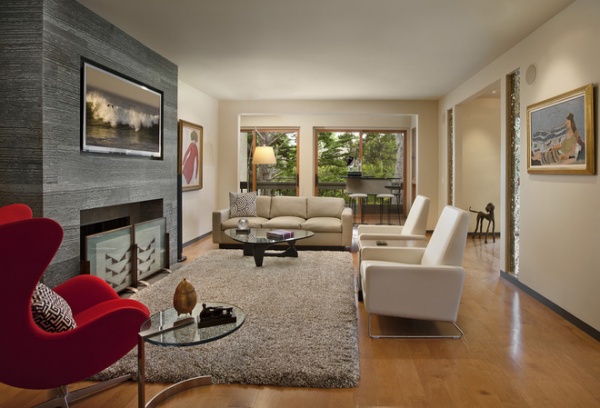
Designers Jeffrey Bernett and Nicholas Dodziuk created the recliner seen here. Bernett’s prior experience designing ergonomic in-flight seating for Northwest Airlines informed his design of the residential Flight Recliner. When upright, it is a comfortable, streamlined club chair. To recline, it uses a mechanism that takes only a modest seated thrust to activate it, fully expanding it to cradle the entire body from head to toe.
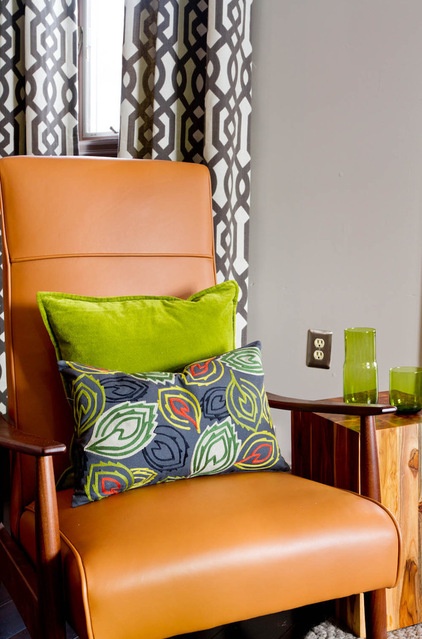
This recliner, designed in 1966 by Milo Baughman, opens with just a slight seated push and accommodates three stages of comfort — from upright to feet up to full recline.
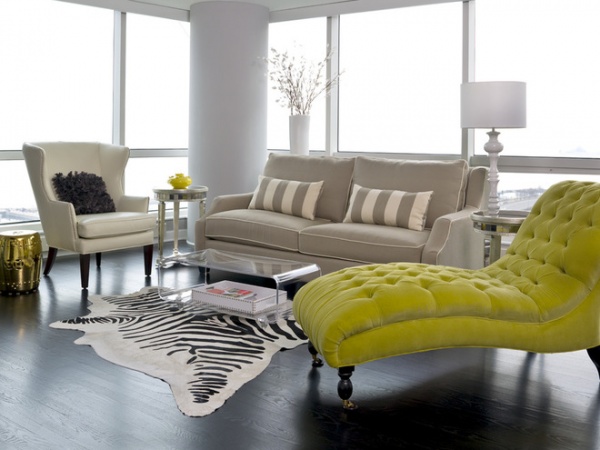
Chaise Longue
A chaise longue is a simpler approach to reclined seating, being a singular piece with no internal mechanisms. Although this chaise form gently follows the S-shaped curve of the spine, not all pieces are ergonomically focused.
Lueder cautions using the word “ergonomic” to describe a particular design without more information about how the sitter actually uses the piece. For example, the primary problem with reclining seats is when our tasks require us to lean forward. “That’s why good ergonomists don’t call chairs ‘ergonomic’ unless it’s referencing the users who are sitting in it,” she says. As long as the piece is being used appropriately, there’s no reason a person shouldn’t be able to use a laptop while sitting in a lounge chair, for example.
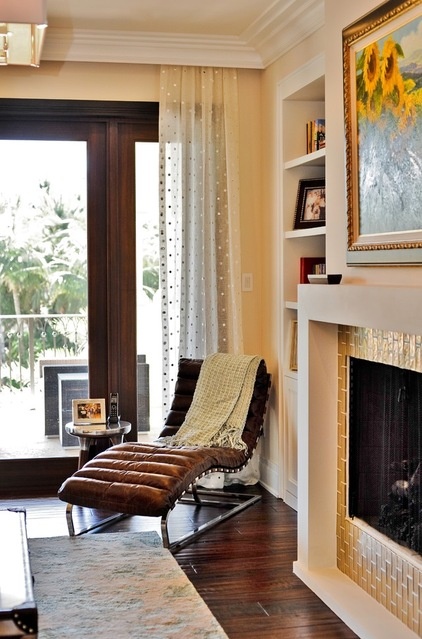
Ergonomists aren’t typically hired for individual residential projects, but often they can provide particularly useful and cost-effective input in special situations, such as when the clients have specific chronic health disorders or disabilities.
Larger multifamily residential projects, Lueder notes, may benefit from a qualified ergonomist’s expertise in areas such as standards compliance and the health and safety implications associated with how design solutions might affect different types of users. For example, qualified ergonomists should recognize potential hazards to children of different ages. They should also identify potential issues that might require expensive retrofitting after the construction is completed. Lueder adds that potential candidates should have an advanced degree in ergonomics or a related profession and be a Certified Professional Ergonomist.
More:
7 Kitchen Flooring Materials to Boost Your Cooking Comfort
Stand-Up Desks Rise to Health Challenges
Related Articles Recommended












